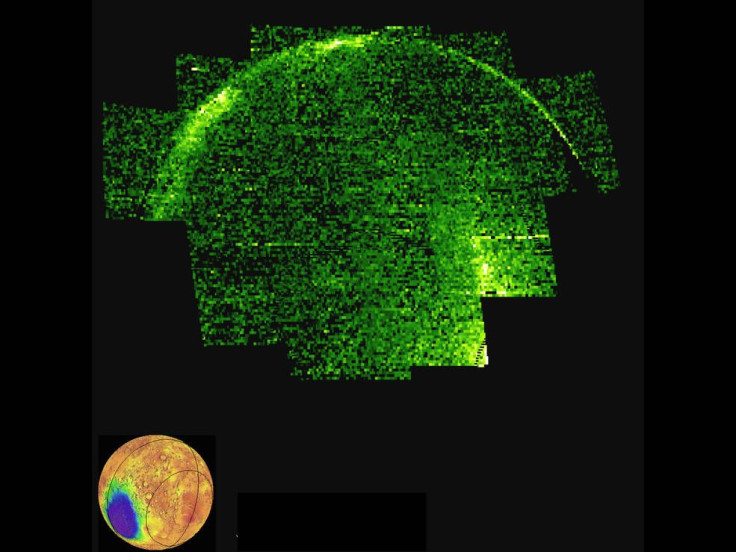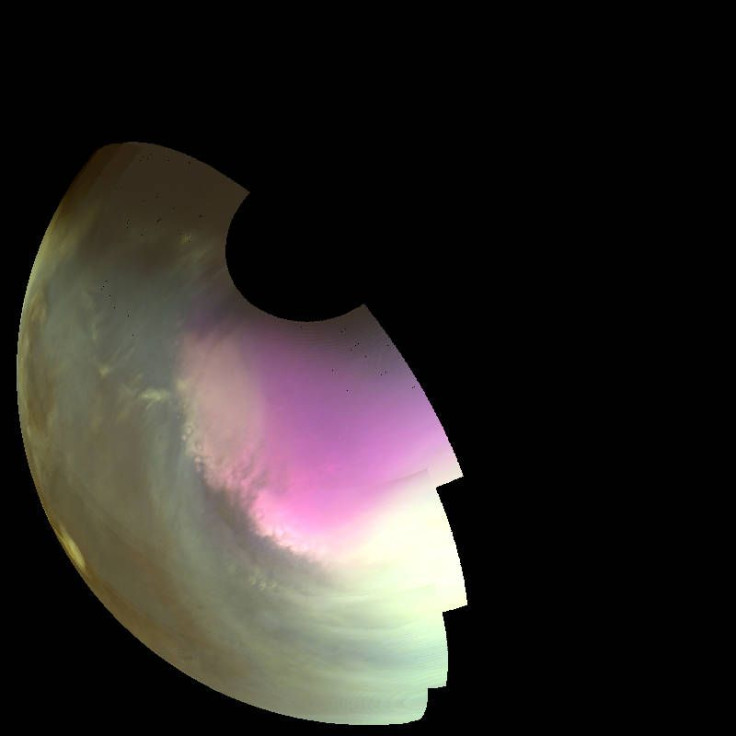NASA MAVEN Mission Images Show 'Unprecedented' Detail From Mars

The Mars Atmosphere and Volatile Evolution (MAVEN) mission has sent some new images from the planet showing an unprecedented level of detail of the “nightglow” that comes from the planet’s atmosphere. Images of the the ultraviolet glow, taken by the Imaging UltraViolet Spectrograph (IUVS), can tell scientists more about the day-to-day of the Red Planet.
"MAVEN obtained hundreds of such images in recent months, giving some of the best high-resolution ultraviolet coverage of Mars ever obtained," said Nick Schneider, instrument lead of the IUVS based at the Laboratory for Atmospheric and Space Physics at the University of Colorado, who is presenting the results Oct. 19 at the American Astronomical Society Division for Planetary Sciences meeting in Pasadena, Calif.
The spacecraft, which arrived at Mars on Sept. 21, 2014, has images from the nightside and the dayside of the planet. Imagery from the former can tell scientists how winds on Mars circulate at such high altitudes. Images from the latter can show how ozone amounts differ from season-to-season and how clouds are formed over volcanoes on the planet.

On Mars, ultraviolet light from the sun breaks down carbon dioxide and nitrogen molecules. High-altitude winds carry the broken down molecules around the planet. When they arrive to the nightside, the molecules go to a lower altitude and combine with nitrogen and oxygen atoms to create nitric oxide molecules. The formation of nitric oxide molecules releases extra energy, which manifests as ultraviolet light causing the sky to glow.
In the past, scientists anticipated Mars to have nightglow and previous missions had detected the presence of ultraviolet light. But the new images are the first to capture this effect in the atmosphere of Mars. According to NASA, “splotches and streaks” on the image indicate where nitric oxide is forming.
“Such concentrations are clear evidence of strong irregularities in Mars' high altitude winds and circulation patterns,” says NASA in a statement. “These winds control how Mars' atmosphere responds to its very strong seasonal cycles.”

Images from the dayside show the atmosphere and surface around Mars’ south pole as the season transitions into spring. Ozone amounts change with the seasons on the planet, as its presence relies on water vapor, which destroys ozone. In the winter, when water vapor is frozen out of the atmosphere, ozone accumulates. But as water vapor becomes present in the atmosphere, ozone levels drop. The new images show ozone in spring, suggesting that “global winds are inhibiting the spread of water vapor from the rest of the planet into winter polar regions.”
“Wave patterns in the images, revealed by UV absorption from ozone concentrations, are critical to understanding the wind patterns, giving scientists an additional means to study the chemistry and global circulation of the atmosphere,” writes NASA.

MAVEN also captured images of afternoon cloud formation over four volcanoes on Mars. These images show how clouds develop over the giant volcanoes throughout the day. According to NASA, clouds are important for understanding the “planet’s energy balance and water vapor inventory” and will shed insight into the daily and seasonal behavior of the atmosphere of the planet.
"MAVEN's elliptical orbit is just right," said Justin Deighan of the University of Colorado, Boulder, who led the observations, in a statement. "It rises high enough to take a global picture, but still orbits fast enough to get multiple views as Mars rotates over the course of a day."
The MAVEN mission is part of NASA’s Mars Scout program and is managed by the Goddard Space Flight Center. The spacecraft launched in Nov. 2013 to gather data on the planet’s atmosphere, ionosphere and interactions with solar wind and the sun. In addition to the IUVS, the MAVEN has seven other instruments: a Neutral Gas and Ion Mass Spectrometer, a Langmuir Probe and Waves, a Solar Wind Electron Analyzer, a Solar Wind Ion Analyzer, a Solar Energetic Particles, and a SupraThermal And Thermal Ion Composition.
© Copyright IBTimes 2025. All rights reserved.






















